SIGGRAPH Asia 2009: Adaptation
Chair(s):
Location:
Yokohama, Kanagawa, Japan
Dates:
December 16th-19th, 2009
Art Show Overview:
Welcome to Adaptation, the Art Gallery for SIGGRAPH Asia 2009. In this second SIGGRAPH Art Gallery exhibition in Asia, we are proud to showcase a collection of excellent, adventurous artists working in digital art, fine art, and design all over the world (Japan, the USA, Germany, Taiwan, Austria, Russia, Korea, Hong Kong, China, France, and other countries). Because most of the artists are visiting Japan and showing their work at a SIGGRAPH conference for the very first time, Adaptation is creating a brandnew synergy of technology, art, and diverse perspectives in Asia, the epicenter of 21st-century digital media.
We live in a rapidly changing world of technological advances, environmental crises, and evolving awareness, surrounded by unprecedented challenges. Our ability to adapt has never been as crucial as it is today. For Adaptation, artists were invited to respond to this critical time in human history. We were excited to receive a diverse range of perspectives, presented in the most creative ways, in response to our theme. Many of the submitted works addressed climate change and energy consumption. Others presented new ways of looking at architecture, clothing, and food by adapting where we live, what we wear, and what we eat. Several artists used everyday objects in unexpected ways, subverting and surprising the audience’s perceptions of value. For example, Shih Chieh Huang, an artist from Taiwan, uses found objects to create immersive installations with robots that emit light, sound, and movement that suggest bio-luminescent organisms.
Several Adaptaion artworks respond to technological society with humor and play, and others focus on the negative effects of technology on human psychology: anxiety, fear, and loss. In Yuliya Lanina’s film “Mishka”, viewers are confronted with conflicting emotions of childhood memories and adult fantasies through characters made of transformed children’s mechanical dolls. Instead of just selecting artworks that use digital technology, the Art Gallery jury strongly supported a critical, conceptual examination of how technology affects every aspect of human existence.
Along with the media usually represented in SIGGRAPH Art Galleries, this year’s show includes an array of unique, innovative media hybrids: performances that generate energy to make plants grow, interactive installations that use living insects, and augmented reality t-shirts that attendees can wear. We are delighted to eat at Electronic Cuisine, where Jeremiah Teipen serves a variety of real foods like sandwiches and sushi with robotic and electrical components.In Adaptation, we are also honored to showcase special live performances scheduled throughout the conference. In the invited piece Quintessence, composer and musician George Hajdu directs a networked orchestra, connecting musicians in a live simultaneous performance in Yokohama and Europe. Attendees will be fascinated by Ursula Endlicher’s deconstruction of HTML from popular web sites into choreography for a unique dance performance. In Open Reel Ensemble, Wada Ei fuses magnetic audio-recording devices, reel-to-reel analog tape recorders, singing, and digital technology such as iPhones to create a surprising musical performance.
A distinguished committee of curators, artists, art critics, and educators from the USA, China, Germany, and Japan came together to shape this exhibition by inviting artists and participating in an extremely selective jury process. We were pleased to receive over 400 online submissions from around the world, but it was a difficult task to select the top four percent that were accepted for presentation in the SIGGRAPH Asia 2009 Art Gallery.
I would like to thank all of the artists, committee members, reviewers, my interns from New York Institute of Technology, and our support staff at Koelnmesse and Q LTD, who have all worked together with herculean efforts to bring to life this groundbreaking exhibition. I would especially like to acknowledge the work of the Vice-Chair, Mariko Tanaka, and other committee members, without whom this show would not have been possible.
We are honored to join our host city’s celebration of the 150th anniversary of the port of Yokohama’s opening to the world by welcoming these incredible artists, whose works will continue to inspire us as we look ahead to the next 150 years of challenge and adaptation.
Committee(s):
- Yuko Oda
- Mariko Tanaka
- Katie Morabito
- Yuka Yokoyama
- Matthew Garrison
- Jing Zhou
-
- Monmouth University
- Hans Tammen
-
- Harvestworks
- Ellen Pearlman
- Terry Nauheim
- Nobuo Takahashi
- Yasuo Ohba
General Committee:
Art Show Reviewers:
- Brian Cavanaugh
- Cezar Alvarez
- Charles Schwartz
- Christine Miller
- Ed Purver
- Erik Carver
- Erkki Huhtamo
-
- Independent Critic and Curator
- Video and Electronic Media
- Gretchen Kraus
- Howard Huang
- Jason Nickel
- Jeff Thompson
-
- Stevens Institute of Technology
- Karen Gilbert
- Knut Hybinette
- Linda Lauro-Lazin
-
- Pratt Institute
- Lisa Jevbratt
- Matthew Ostrowski
- Maura Doern Danko
- Mortiz Wettstein
- Nailah Crittendon
- NYIT Computer Graphics Laboratory
- Nisi Jacobs
- Patty Wongpakdee
- Rashaad Newsome
- Rozina Vavetsi
- Steve Ritter
- Alcatel Lucent
Additional Information:
By Matthew Garrison
Much of the work in Adaptation combines traditional notions of art and innovative technology. It is not a new dialogue, but one that has been ongoing since the advent of photography and film. And every technological advance brings with it new dimensions in perceptions and experiences, each one pioneering a new phase in art history. There are artists who will naturally gravitate to technological breakthroughs, embracing technology and its ability to merge existing techniques and concepts with new powers of technological malleability and connectivity. For them, technology becomes an expressive, conceptual force. While the digital revolution is a radical development, the fundamental objectives of art remain the same: the observation and reflection by artists of their cultural, political, and physical surroundings.
Twentieth-century artists such as László Maholy-Nagy, Nam June Paik and, more recently, Bill Viola, recognized that technology itself was an expressive medium and cultural force, and they applied it to their own artistic investigations. As digital technology becomes increasingly ubiquitous in the new millennium, it inevitably will continue to influence the work of contemporary artists, allowing them, for example, to incorporate complex audio and video tracks into objects, projections, and installations.
Technical disciplines, once reserved for specialists, make it possible for artists to intuitively integrate these multi-sensory experiences. In effect, artists working in this mode have become unique specialists within the context of their own artistic practices.
The technological artists of the 20th century came of age alongside a growing emphasis on the recognition of materials and processes employed in the creation of art. Ultimately, the materials and evidence of the process itself became the subject matter in the work of American Process artists like Robert Morris, Lynda Benglis, and Barry Le Va, as well as Japanese Mono-ha artists such as Sekine Nobuo and Lee U Fan. These movements were conceptually grounded in the intrinsic logic of their materials, focusing specifically on the physical relationship of the materials to the viewer. And, unlike the function of representational art as a kind of window, these movements located art in the same physical and conceptual space as its audience.On the other hand, the creative process of contemporary digital artists is more closely related to the creative process of composers and writers. Digital art is often a solitary, sedentary practice and, as with all disciplines, is dependent upon vision, intuition, and proficiency in the medium. The ephemeral nature of the digital process and the intense focus on the screen often steer digital artists away from their physical surroundings toward more introspective terrain and imaginings. Consequently, digital art differs greatly from the material emphasis of Process Art and Mono-ha. Instead, it sets up physical relationships to imaginative concepts and worlds. The relational emphasis in the writing of Jack Burnham anticipated the contemporary investigations of today’s digital artists. He states in his 1968 essay “System Esthetics”: “The specific function of modern didactic art has been to show that art does not reside in material entities, but in relations between people and between people and the components of their environment.” As artists became inherently more aware of the audience’s physical relationship to their work, they applied the relational discoveries of the 20th century to the psychic and emotional conditions of the new millennium. Initially, digital art is seemingly at odds with the observations of the French phenomenologist, Maurice Merleau-Ponty, who wrote: “It is by lending his body to the world that the artist changes the world into paintings.” Merleau-Ponty explains that painting is the result of the artist’s “…intertwining vision and movement” – the union of mind and hand. (“The Eye and Mind”, 1961) But further consideration reveals a commonality: that the bodies of digital artists are also inescapably linked to their creative visions, even though their movements are often nominal, restricted to the keyboard and mouse.
The computer is often compared to the brain in its ability to retain memories and retrieve information. Furthermore, both the brain and the computer are dependent upon electricity to function. It’s exciting to imagine, as Joseph LeDoux does, that the brain’s “electrical-to-chemical-to-electrical coding of experience … make(s) possible all of the wondrous (and sometimes dreadful) accomplishments of human minds.” (“Synaptic Self ”, 2002) For this reason, the computer as an extension of the mind is an exceptionally useful medium for artists and expands Merleau-Ponty’s assertion that the creative process and the body are interconnected.
The computer screen is actually an extension of the mind’s eye, making thoughts and feelings visible. The mind-body-computer connection is underscored by Claudia Robles’ EEG (electroencephalogram) performance piece, INsideOUT, and Chi Man Siu’s piece, Optical Handlers – eeyee. The performer in INsideOUT is hooked up to both an EEG and a computer in front of an immense projection of ever-changing images. The shifting images, combined with surround sound, are triggered by the EEG readings of the performer’s brain activity. In Optical Handlers – eeyee, the performer wears a helmet with small LCD screens that extend over the eyes. The screens, attached to cameras on both hands, receive imagery from the cameras in real time, while the exterior of the helmet is equipped with “peek holes” for spectators to look through and see what the performer is perceiving. The humorous movements of the performer are indicative of a struggle to process sight through hands. The brain and movement are central to both pieces on micro and macro levels.
The relational potential of digital art is further exemplified in the collaborative environmental projections of 3-D sculptor Haru Ji and composer Graham Wakefield. Together, they have created the immersive installation, Artificial Nature: Fluid Space, populated by vibrant, interactive organisms. Artificial Nature is not a recorded medium like video. Instead, it is a programmed, self-sustaining, digital ecosystem with organisms that consume, grow, metabolize, reproduce and respond to activities within a dark expansive environment. Nor is Artificial Nature entirely self-contained; the organisms are also programmed to respond, as though caught in the currents of wind or water, to the movement of viewers. The reactions and sounds of the brightly colored organisms to these movements instill in the viewers a child-like curiosity, encouraging them to personally interact with the fluid environment. Furthermore, Artificial Nature brings to mind Artificial Intelligence (AI) except, rather than simulating intelligence, Ji and Graham create an entirely new realm with its own logic, life forms and relational dynamics.
The playful, strategizing quality found in much of the art in Adaptation is, in its own way, intrinsic to the digital process itself. Its potential to employ an unlimited number of effects within the framework of the software and programming languages often feels like a game of chess. In order to realize a vision or idea, digital artists must first figure out how to efficiently achieve the desired results. The creative process balances logic with intuition, providing visual evidence of an emotional and conceptual partnership. Marina Zurkow’s animation, Slurb (a combination of the words “slum” and “suburb”), suggests resolve and adaptability in the aftermath of a devastating flood. Its playful, fairy-tale creatures, marine life, and humans are preoccupied with their own survival, yet resigned to the inevitability of their circumstances. Playful characters, in the form of sexually liberated robotic toys, also populate Yuliya Lanina’s video, Mishka, reassembled in the spirit of Mary Shelley’s Frankenstein. These “toys” provide gleeful access to forbidden quarters of the psyche, where innocence and perversion revel in one another’s company.
Although much of the work in Adaptation consists of projections and screens, many artists also incorporate technology into objects and installations. For example, there is the potential with 3D technology for images and thoughts to be directly extracted from the mind’s eye and located in actual space, effectively linking the 2D, imaginative concepts of painting to the 3D material principals of sculpture. This is evident in the work of Jocelyn Kolb in the manner in which she employs 3D software to create body adornments based on mathematical organizations and nature. After virtually building the pieces on a computer, she outputs her work to a 3D printer that, in turn, produces a three-dimensional, acrylic rendering. The otherworldly appearance of Kolb’s undulating forms are made possible by their digital origins and the capacity of 3D printing to turn out extremely intricate shapes.
Adaptation presents art and technology at the crossroads of the industrial and digital ages. The exhibition embodies the spirit of our time, when generations raised on technology are in direct contact with those who learned to use technology later in life, or not at all. The overlapping of eras is evident in individual pieces such as Shih Chieh Huang’s installations of mechanized plastic and found objects, as well as in the exchange of ideas throughout the exhibition. Just as it must have been difficult for Louis Daguerre, inventor of the daguerreotype photograph in 1839, to imagine the powers available to photographers in the digital age, it is equally difficult to anticipate the powers that will be available to digital artists 200 years from now. Like Daguerre, the artists in Adaptation represent the onset of a new age. Their focus is on the establishment of new ways of interacting with art and technology in the early stages of the digital revolution and, in the process, the materialization of the intangible and temporal worlds under investigation. Matthew Garrison, assistant professor of digital media at Albright College, is an artist and curator based in the Philadelphia area.
Exhibition Artworks:
-
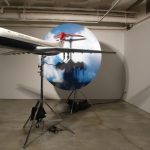
360º
[Miguel Palma]
Categories: [Installation] -
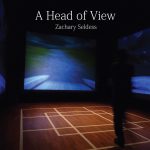
A Head of View
[Zachary Seldess]
Categories: [Augmented Reality/Virtual Reality] -

Amidah
[Tobaron Waxman]
Categories: [Performance] -
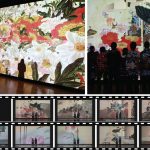
Analysis and Understanding of Paintings ...
[Sangtae Kim]
Categories: [Installation] -
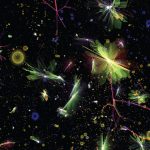
Artificial Nature: Fluid Space
[Haru (Hyunkyung) Ji] [Graham Wakefield]
Categories: [3D & Sculpture] -
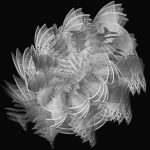
Ballerina
[Yayoi Yokoyama]
Categories: [2D & Wall-Hung] -

Blowout at Exit 16A
[Till Nowak]
Categories: [2D & Wall-Hung] -
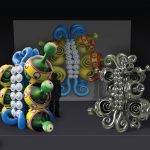
Bucco–Multi-Dimensional Butterflies In...
[Yoichiro Kawaguchi]
Categories: [3D & Sculpture] -

Capacitive Body
[Martin Hesselmeier] [Andreas Muxel]
Categories: [Installation] [Sound Art] -
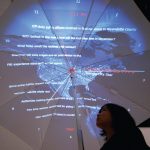
Climate Shifts
[Christa Erickson]
Categories: [Installation] -

Coexist?
[Rendall Koski] [Meng Li]
Categories: [Interactive & Monitor-Based] -

collective
[Hisao Ihara]
Categories: [2D & Wall-Hung] -
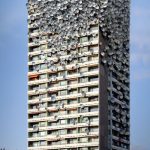
Dishes
[Till Nowak]
Categories: [2D & Wall-Hung] -

Electronic Cuisine
[Jeremiah Teipen]
Categories: [Installation] -
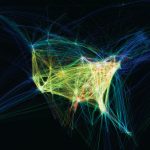
Flight Patterns
[Aaron Koblin]
Categories: [2D & Wall-Hung] -
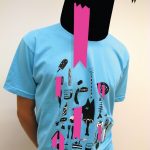
Happy Wear
[Camille Scherrer]
Categories: [Installation] -
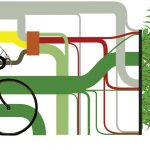
Human Potential (Movement)
[Jaime Allen]
Categories: [Installation] -

in Touch
[Jane Rigler]
Categories: [Performance] -

Inflori Illumini
[Jocelyn Kolb]
Categories: [2D & Wall-Hung] -

INsideOUT
[Claudia Robles]
Categories: [Performance] -
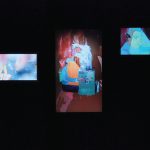
Instances of Commediation
[Eduardo Raon] [Joana Sa]
Categories: [Installation] -

LED Kimono
[Miya Masaoka]
Categories: [Electronic/Robotic Object] [Performance] -
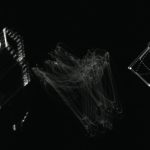
Life at the Witch Trails
[Natalie Bewernitz] [Marek Goldowski]
Categories: [Animation & Video] [Installation] -
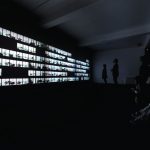
Lights and Shadows
[Wow Inc.]
Categories: [Installation] -
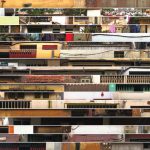
LoopLoop
[Patrick Bergeron]
Categories: [Animation & Video] -
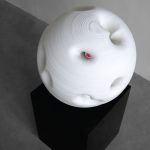
Miniverse2
[Katja Loher]
Categories: [Performance] -

Mishka
[Yuliya Lanina]
Categories: [3D & Sculpture] [Electronic/Robotic Object] -
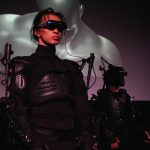
netBody: Augmented Body and Virtual Body...
[Suguru Goto]
Categories: [Performance] -
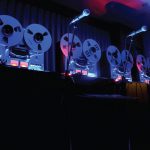
Open Reel Ensemble
[Keitaro Kuno] [Kimitoshi Sato]
Categories: [Performance] -
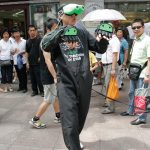
Optical Handlers – eeyee
[Chi Man Siu]
Categories: [Augmented Reality/Virtual Reality] -

Plaster Patch
[Max Abeles]
Categories: [Electronic/Robotic Object] -
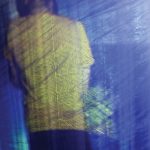
Platonic Tectonics
[Tiffany Sum]
Categories: [Animation & Video] [Installation] -
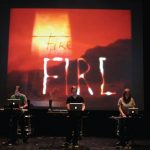
Quintessence
[Stewart Collinson] [Georg Hajdu]
Categories: [Performance] -

Rusty Faces
[LiQin Tan]
Categories: [Animation & Video] -
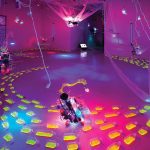
S-A-09
[Shih-Chieh Huang]
Categories: [Installation] -
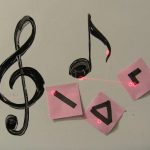
scoreLight
[Alvaro Cassinelli] [Masatoshi Ishikawa]
Categories: [Sound Art] -
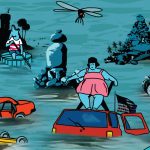
Slurb
[Marina Zurkow]
Categories: [Animation & Video] -
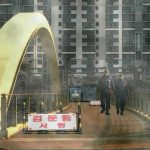
Special Habitation
[Gyuwan Choe] [Hoyeon Jang]
Categories: [Animation & Video] [Internet Art] -

Spook Experiment
[Kenseth Armstead]
Categories: [Installation] -
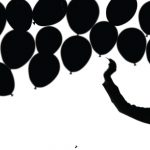
Tengible
[Wow Inc.]
Categories: [Installation] -

Truce: Strategies for Post-Apocalyptic C...
[Robin Meier] [Ali Momeni]
Categories: [Electronic/Robotic Object] [Sound Art] -
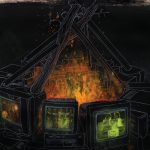
Warmth Through the Night
[Jonathan Elliot]
Categories: [2D & Wall-Hung] -

Website Impersonations: The Next Generat...
[Ursula Endlicher]
Categories: [Installation] [Performance]




